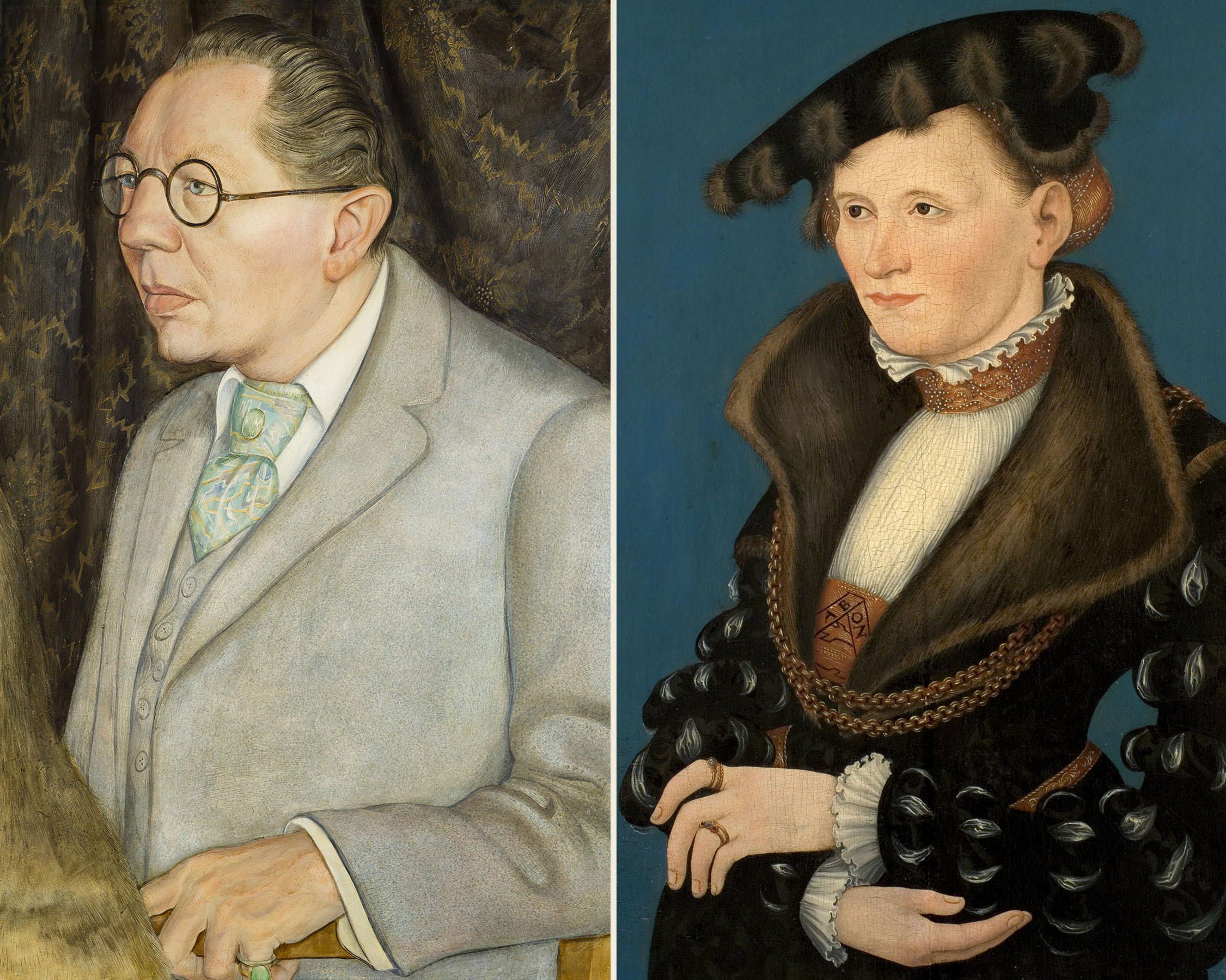MUSEO THYSSEN - BORNEMISZA
MUSEO THYSSEN BORNEMISZA
OTTO DIX
TÉCNICAS Y SECRETOS - RETRATO DE HUGO ERFURT
TECHNIQUES AND SECRETS - PORTRAIT OF HUGO ERFURT
Comparativa con Cranach
Comparative Cranach
- Cabello Dix/Cranach Hair Dix/Cranach
- Ojo Dix/Cranach Eye Dix/Cranach
- Boca Dix/Cranach Mouth Dix/Cranach
- Ropajes Dix/Cranach Clothing Dix/Cranach
- Mano Dix/Cranach Hand Dix/Cranach
Comparativa Dix/Cranach
Desvelar uno de los aspectos secretos de las obras de arte nos lleva a encontrar posibles nexos de unión entre la obra de Otto Dix “Hugo Erfurth con perro”, (1926) y los maestros del Renacimiento, como es el caso del “Retrato de una mujer”, (1539) de Lucas Cranach, El Joven, ambas obras pertenecientes a la Colección del Museo Thyssen-Bornemisza.
Artista muy metódico, conocía la técnica elaborada y sofisticada de los artistas que tanto admiraba, recuperando este aspecto en su proceso de trabajo: sigue las mismas pautas técnicas en el método empleado para tratar las luces, en la ejecución de algunos detalles o incluso en el tratamiento iconográfico que da al retrato, encontrando similitudes entre ambas pinturas.
Por otro lado, la analítica y el muestreo de las pinturas ha permitido realizar paralelismos entre la forma de ejecutar Otto Dix sus obras y las de los maestros italianos y germanos de los siglos XV y XVI.
Comparative Dix/Cranach
The disclosure of one of the secret aspects of a work of art points, in the case of this portrait, to possible links between Otto Dix’s “Hugo Erfurth with Dog” (1926) and paintings by the masters of the Renaissance, as in the case of Lucas Cranach, the Younger’s “Portrait of a Woman” (1539), both of which form part of the Thyssen-Bornemisza Collection.
A highly methodical artist, Dix was acquainted with the elaborate and sophisticated techniques used by the old world artists he so admired, recovering this aspect in his working process: he followed the same technical guidelines in the method used to treat light, in the execution of certain details and even in the iconographic treatment of the portrait, as evinced by similarities between both paintings.
On the other hand, testing and sampling of the paintings have unveiled parallelisms between the ways in which Dix executed his works and that of the Italian and German masters of the fifteenth and sixteenth centuries.
